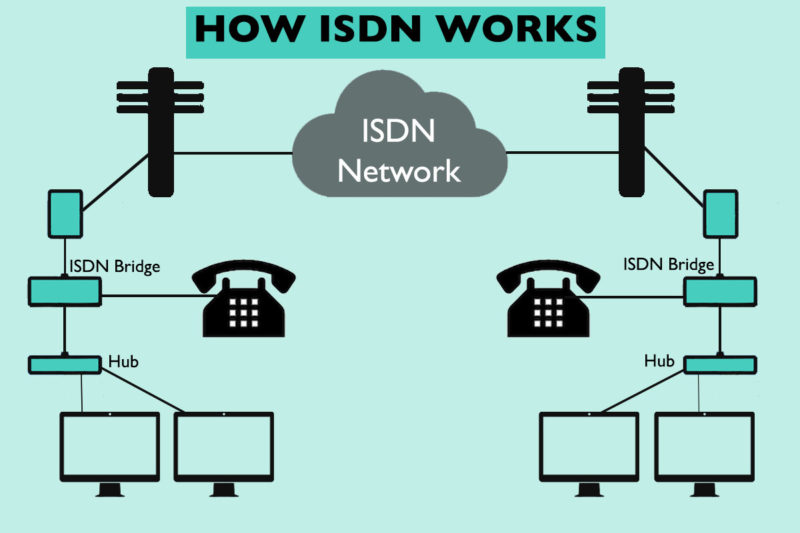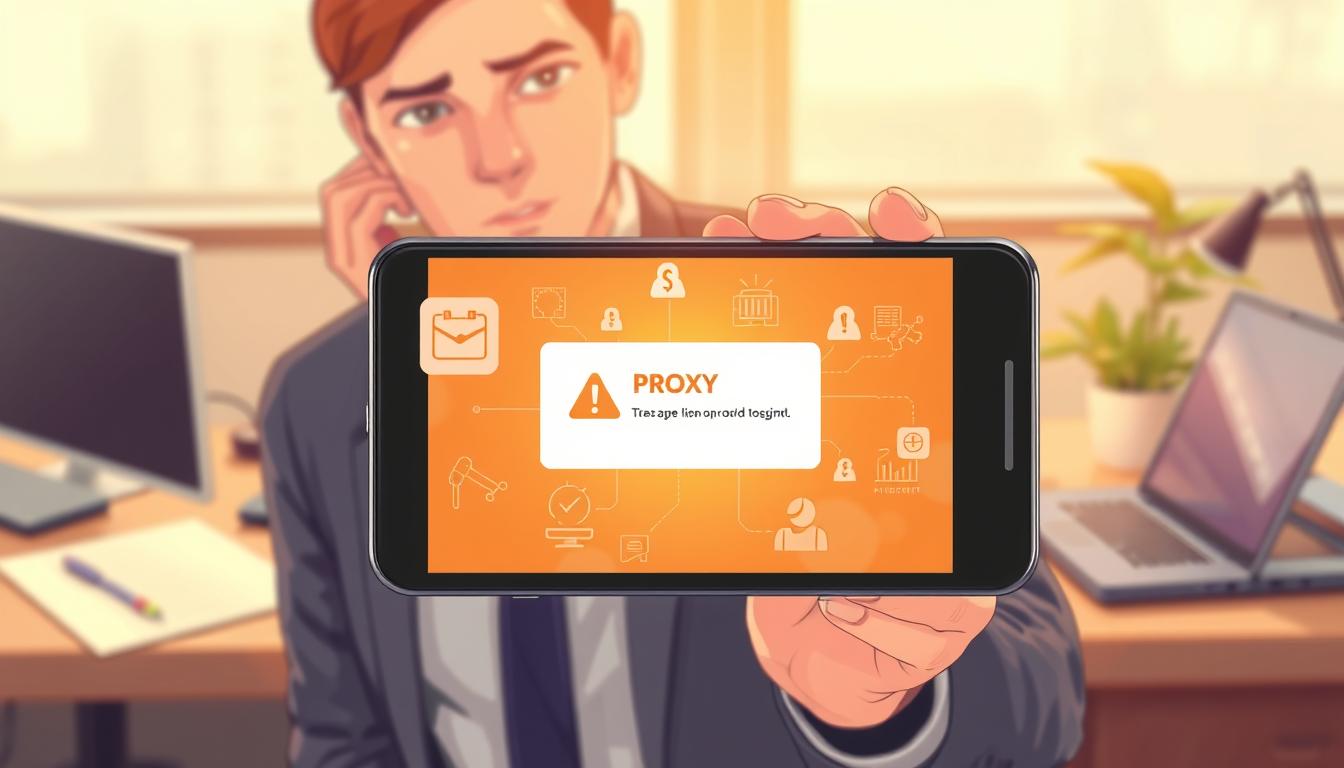FTC disclaimer: This post contains affiliate links and I will be compensated if you make a purchase after clicking on my link.
ISDN brings high-speed Internet access and modernizes Internet usage. It transmits all data types, such as voice and data. In earlier technology, all data types require lines and systems.
Further, ISDN, short for Integrated Service Digital Network, has shown significant service improvement compared to Dial-up Connection.
It uses a copper-based system to transmit high-speed data and better voice quality than analog transmission.
The evolution of ISDN lies in between the Dial-up connection and DSL/Cable Internet connection. You will find ISDN services still exist, just like Dial-Up connection.
But, DSL/Cable Internet connection and Fiber Internet Connection has replaced most of the ISDN services.
ISDN uses standard telephone data service for Internet services like a Dial-up connection.
Let’s look into the deeper aspect of ISDN and its existence in the modern world.
What is Integrated Service Digital Network (ISDN)?
ISDN or Integrated Service Digital Network is a communication standard that works over a circuit-switched network system to transmit data and voice over a digital line.
However, ISDN services can also use the packet-switched network.
The most preferred digital line is copper lines which replace the traditional and outdated landline technology.
The purpose of ISDN is to provide users with better speed and high-quality connections over traditional connections. Further, it improves the data transmission speed, bandwidth, and throughput.
The ISDN services include phone calls, data transmission, voice calls, and other network services.
How ISDN works? ISDN Architecture
ISDN is considered the best solution to the high internet connection when there is no Digital Subscriber Line (DSL) and Cable Internet Connection option.
Further, ISDN requires traditional POTS (Plain Old Traditional Service) and an assigned phone number to start your Internet connection.
The whole setup process to start working with ISDN involve the following steps.
- Install modem and plug into the telephone line
- Configure the settings to point it to the phone number given by your ISP.
- Modem by dialing the phone number start directing the connection.
ISDN uses a traditional copper telephone line to transmit data. Further, the telephone line split into multiple digital channels.
Moreover, each digital channel operates concurrently. Thus, it creates the possibility to make and receive multiple phone calls simultaneously using the single physical copper line.
Types of ISDN
There are three types of ISDN
- BRI (Basic Rate Interface) ISDN
- PRI (Primary Rate Interface) ISDN
- B ISDN (Broadband ISDN)
BRI ISDN
The Basic Rate Interface, in short BRI, is a primary ISDN configuration for voice-grade telephone services.
It uses twisted-pair copper wires to connect and transmit data to the network. The whole operation works in full-duplex mode, which helps transmit data simultaneously in both directions.
Moreover, it consists of 2 B-channel (Bearer channel) at 64 kbit/s and 1 D-channel (delta channel) at 16 kbit/s. The configuration together is referred to as 2B+D.
The B-channel in BRI is used for voice and user data. And, D-channel in BRI combines data packet and call management.
Furthermore, the end of the network line is referred to as “Line Termination” (LT), and the end of the network line at the user end is referred to as “Network Termination” (NT).
So, when we combine all the channels in BRI, it helps in the proper transmission of information.
You will find BRI type ISDN mainly in residential areas or small businesses.
PRI ISDN
PRI, short for Primary Rate Interface, is an ISDN configuration that carries multiple Digital Signal Zero (DS0) services and data between the ISDN network and users.
Moreover, the variation in PRI channels depends on the location and maximum speed; it can be adjusted to 2.94 Mbps.
PRI generally uses 23 B-channels and one D-channel in countries like the US. Further, the channels can be doubled and provide additional D-channel for emergency backup as per the requirement.
Large companies, enterprises, or offices prefer PRI.
B-ISDN
Broadband ISDN is an advanced type of ISDN that runs over fiber-optic cables using ATM switching technology.
Moreover, B-ISDM was designed to improve the overall performance of data transmission. It helps transmit data in hundreds of Mbps both for download and upload stream.
However, B-ISDN had not much impact on mainstream technology because ADSL technology has replaced it.
Differences between BRI and PRI.
BRI and PRI differ in speed. BRI has a standard 128 Kbps speed over a standard copper wire. The data in BRI is divided into 64 Kbps speed for B-channel and 16 Kbps speed for D-channel.
You can achieve 128 Kbps throughput by establishing the standard that uses B-channel.
BONDING (Bandwidth On Demand Interoperability Group) is an ISDN protocol that uses more than one B-channel. It is also known as multilink, load balancing, or channel aggregation.
Multilink PPP is applied on multiple links for splitting, recombination, and sequencing data.
Advantages of ISDN (Integrated Services Digital Network)
ISDN has multiple advantages over analog system
Simultaneous connection
With ISDN, you can have two or more simultaneous connections on the same line.
Fast connection
You can connect to the ISDN system within a few seconds, which is much lesser than the previous delays experienced with an analog-based system.
Faster transmission
The ISDN system is more reliable and has faster data transmission than analog systems.
Remove distortion
ISDN system eliminates noise, echoes, crosstalk, and other types of distortion that affect the transmission.
Multiple digital services
ISDN system can carry multiple services over the same copper wire such as data files, voice, faxes, Internet web pages in digital format.
Operate Multiple devices
Users can use multiple devices such as computers, phones, fax machines, and more with the same line.
Symmetrical and consistent transfer rates
The transmission and receiving rate is symmetrical and consistent in ISDN.
So, if your connection is running with a 64 Kbps bearer channel, then the speed will remain the same in the overall transmission.
Disadvantages of ISDN
Required external power
External supply power is required for ISDN lines to work. So, if the power fails, then the mobile phone won’t work.
Required unique digital phones
You need a unique device to work with the ISDN system and the existing phone. The device can be a digital phone or terminal adapter.
Is ISDN still used?
ISDN has faced intense competition with the introduction of ADSL technology.
Moreover, it was replaced with ADSL technology in most parts of the US and gained a considerable market share in other countries.
Further, DSL or Fiber technology has replaced ISDN systems in most countries.
On the other hand, ISDN is still available in countries not replaced or migrated with other technology.
Also, you will find that the ISDN system is used as an emergency backup if DSL or other digital system fails to work.
The primary difference between ISDN vs. PSTN vs. DSL
PSTN, short for public switched telephone network, is a circuit-switched network that carries services like voice calls over copper wire fixed-line.
Its features include line hunting, fax line, custom messages, caller ID, voicemail storage.
For each service in PSDN, you require a separate PSDN system and have to manage separately, which increases the cost.
ISDN system provides integrated service, allowing multiple services like voice, data, video, and more to run through a single line system.
Further, with the ISDN system, you don’t require separate installation and purchase of services compared to PSTNs.
DSL is the advanced digital system that replaces the ISDN system. It provides transmission of data quickly and in better quality.
Unlike ISDN, DSL services don’t require dial-up services to work. Also, the transmission of packets in DSL technologies is up to 100 Mbps compared to ISDN that provides 128 Kbps.
The best alternative to the ISDN system
The best alternative to the ISDN system is VoIP (Voice Over IP). It provides cost-effective communication services compared to ISDN.
The VoIP system converts audio signals to digital signals and transmits them over an Internet connection from one user to another.
Moreover, VoIP doesn’t require any telephone system to make and receive calls. Further, it is independent of location and devices, making VoIP more reliable and accessible.
The advantage of VoIP over ISDN systems is cost-effectiveness, advanced virtual connection, flexibility, scalability, and accessibility.











